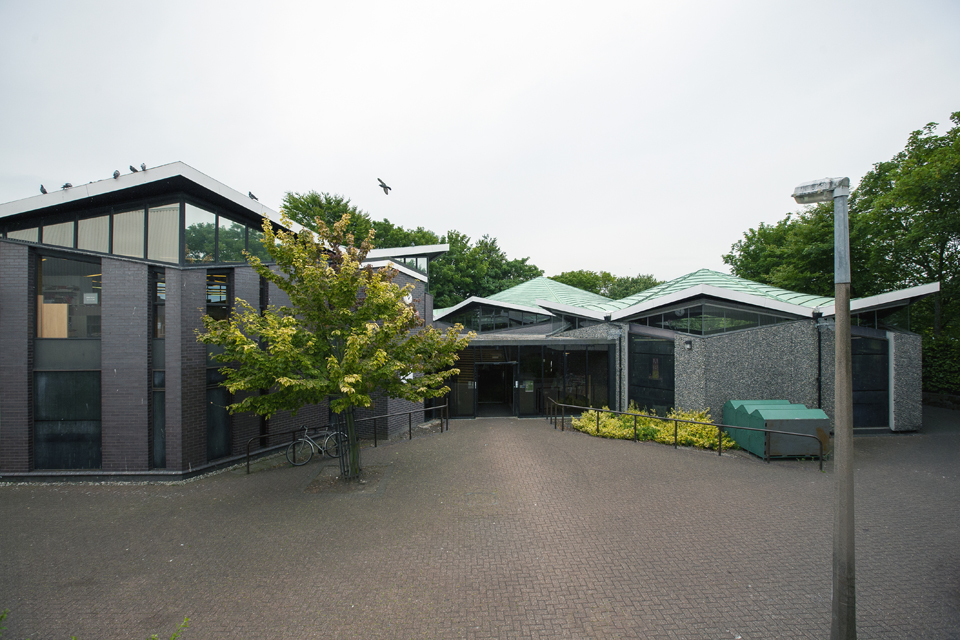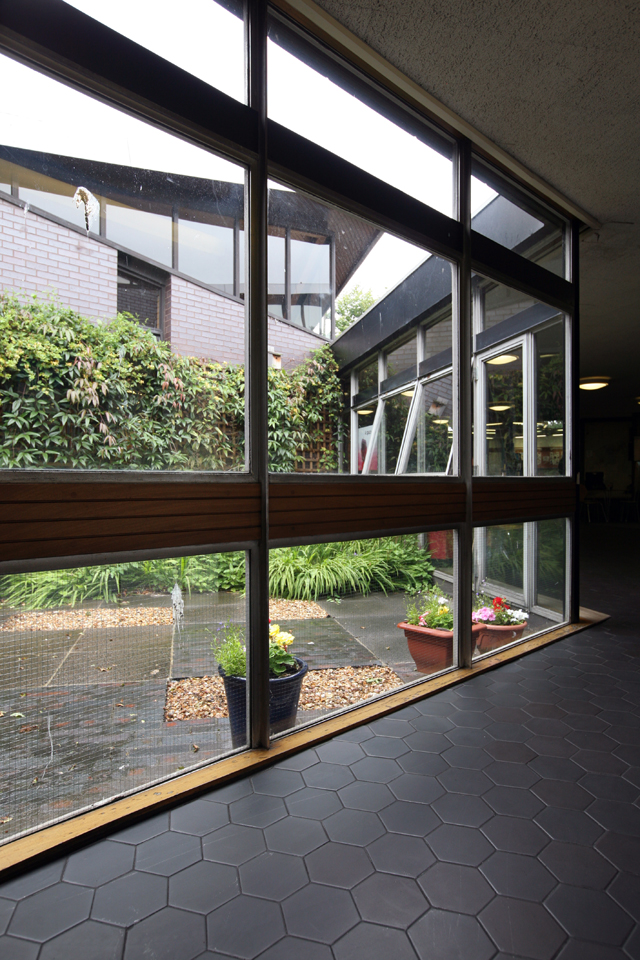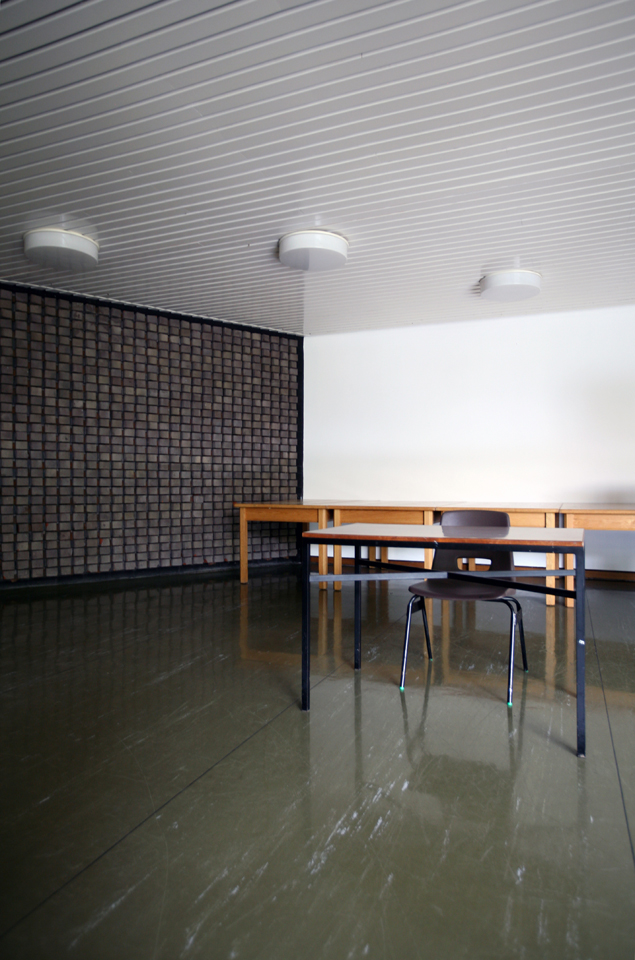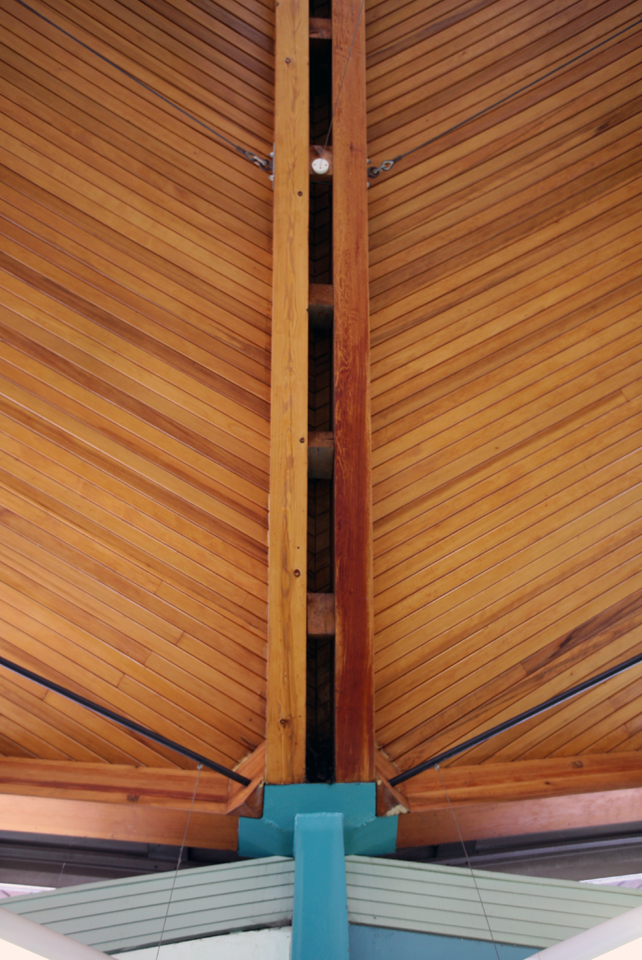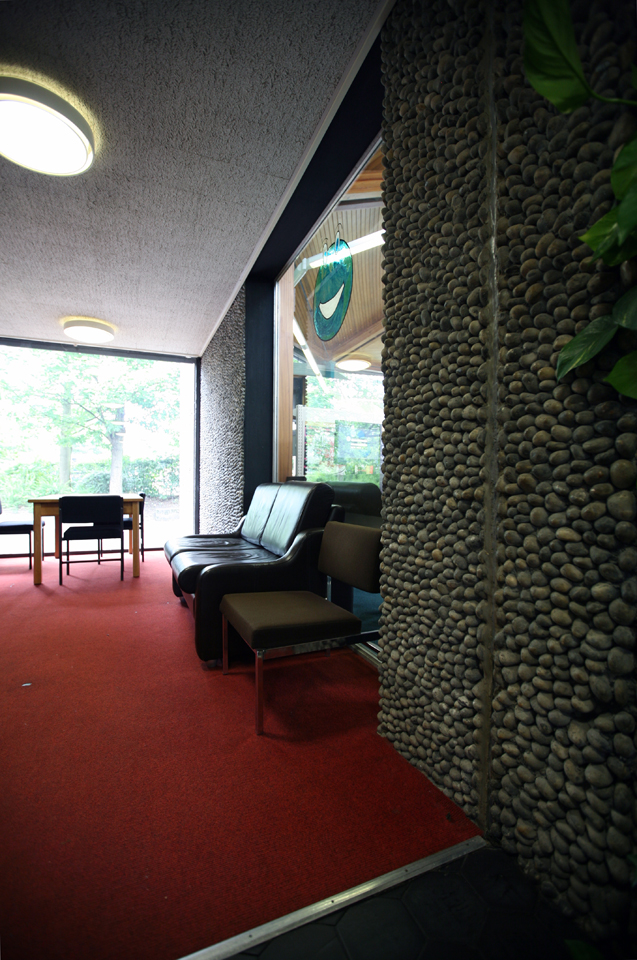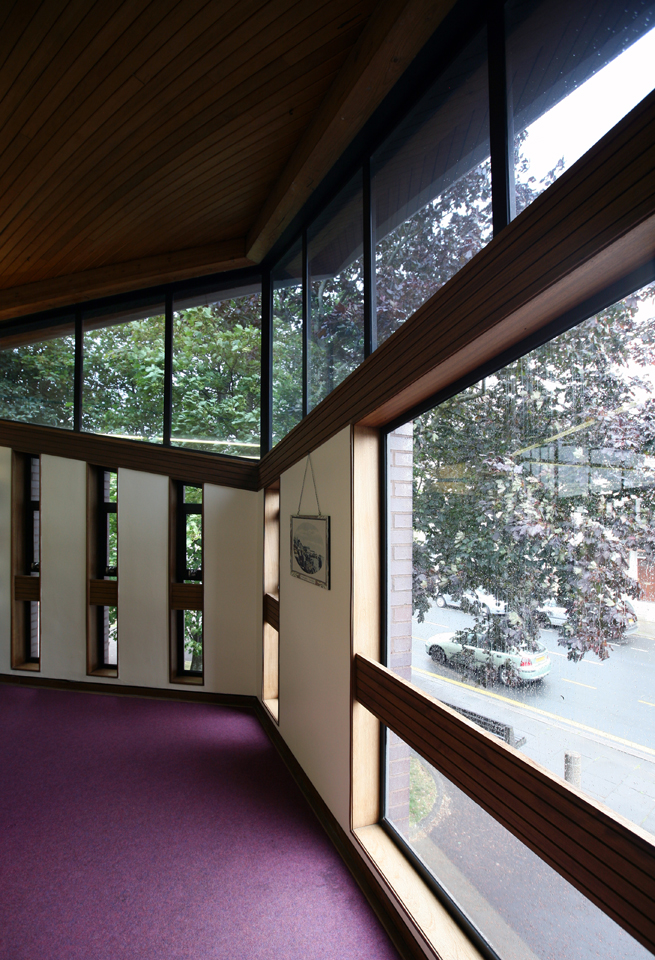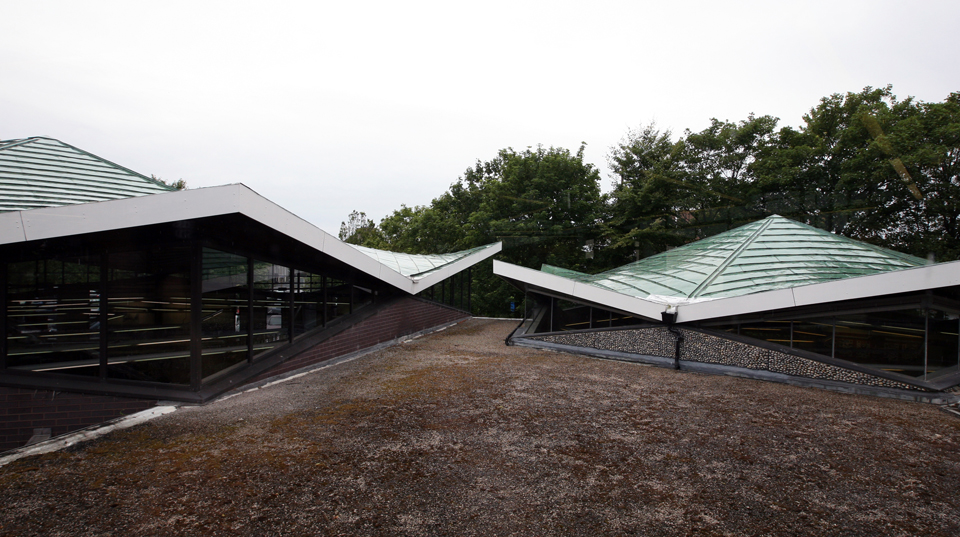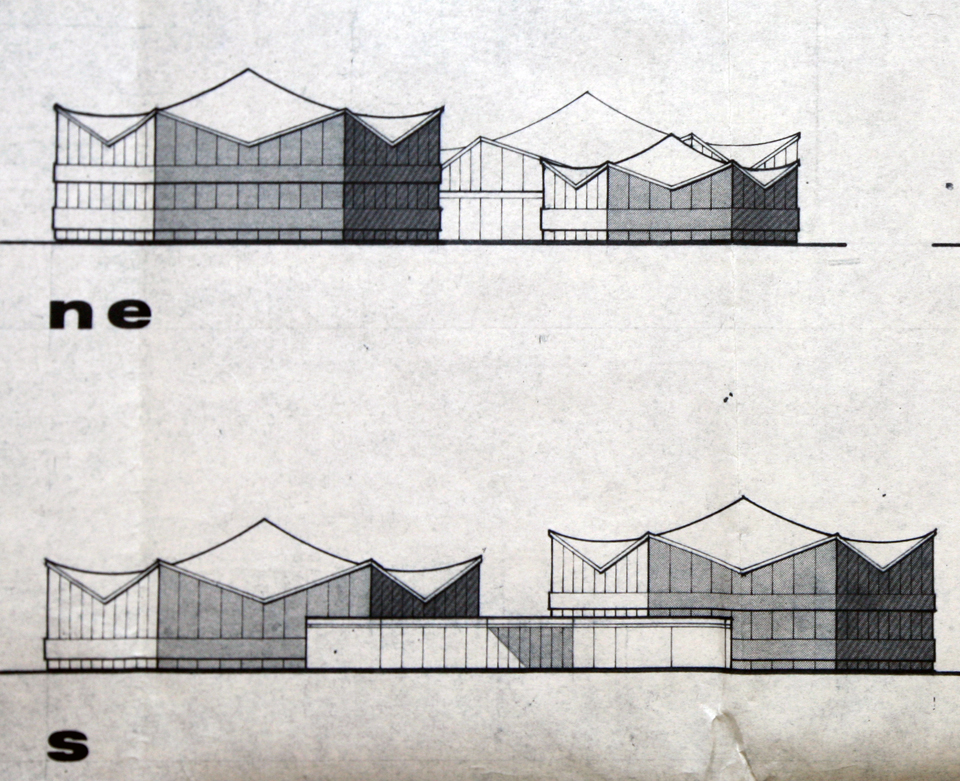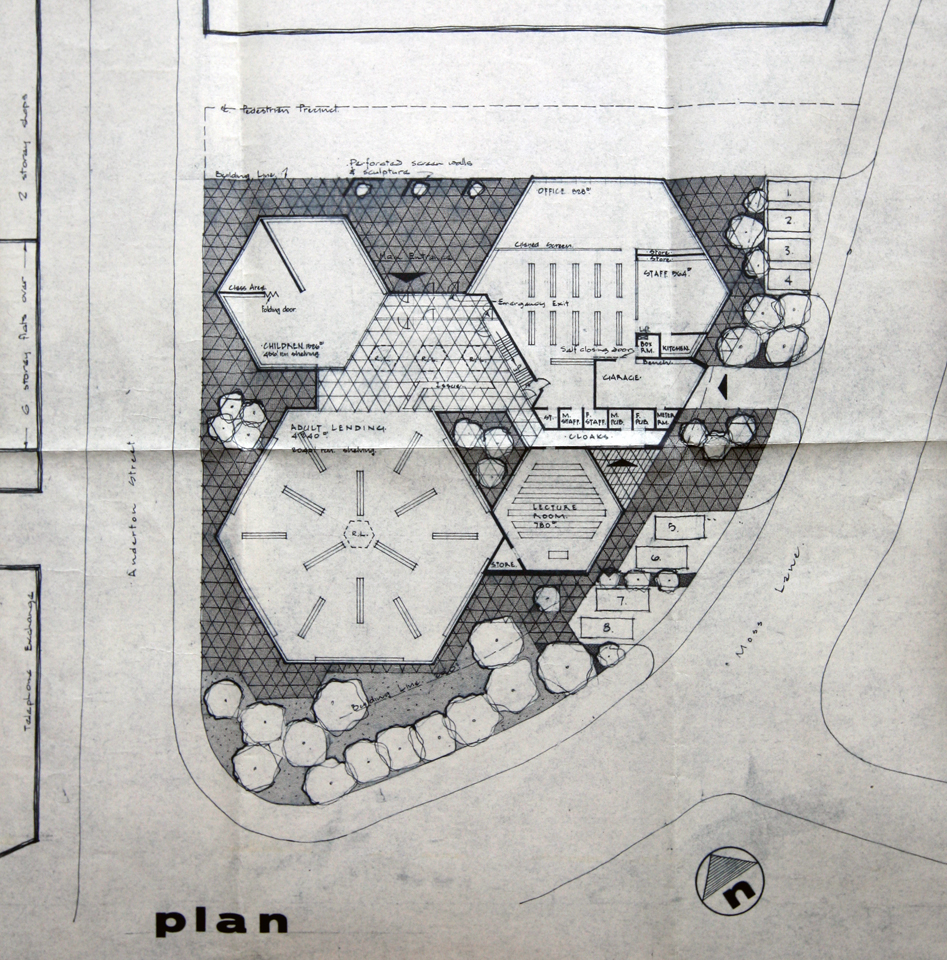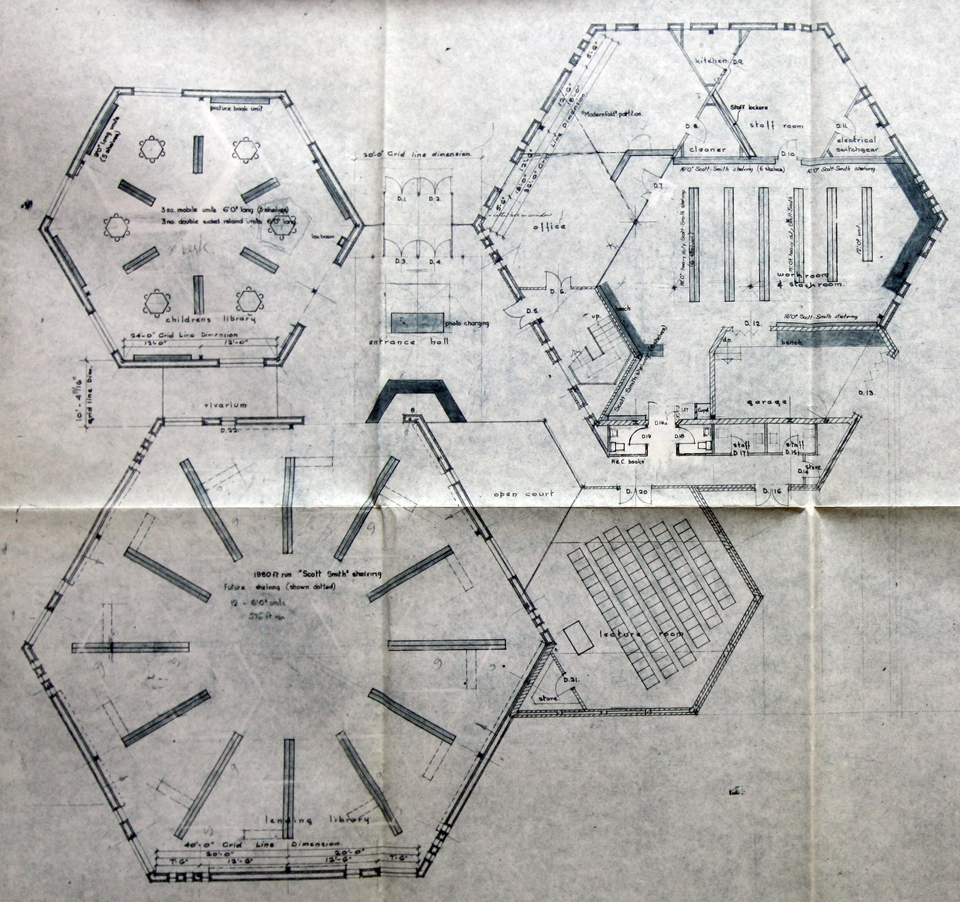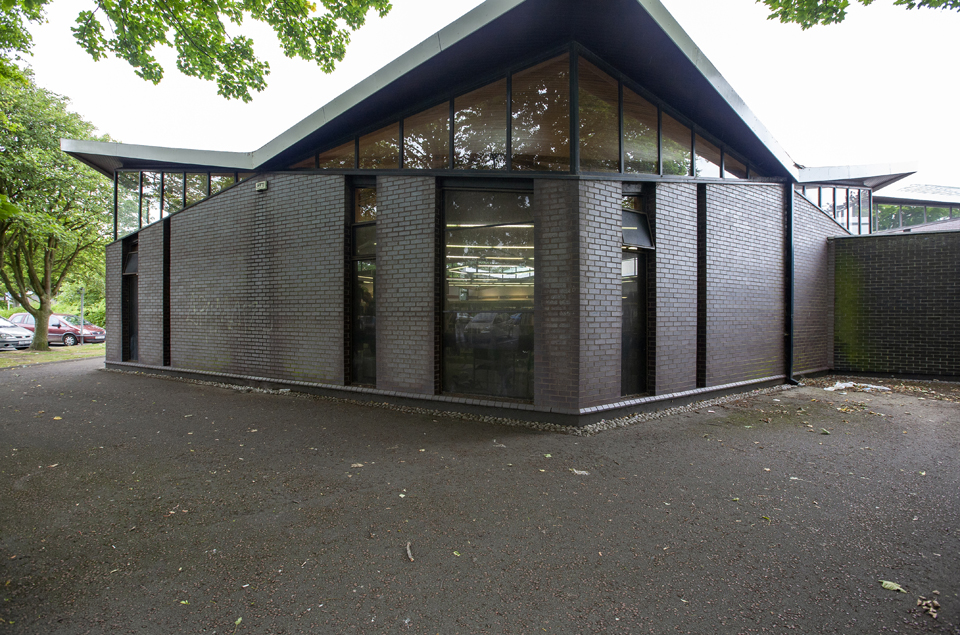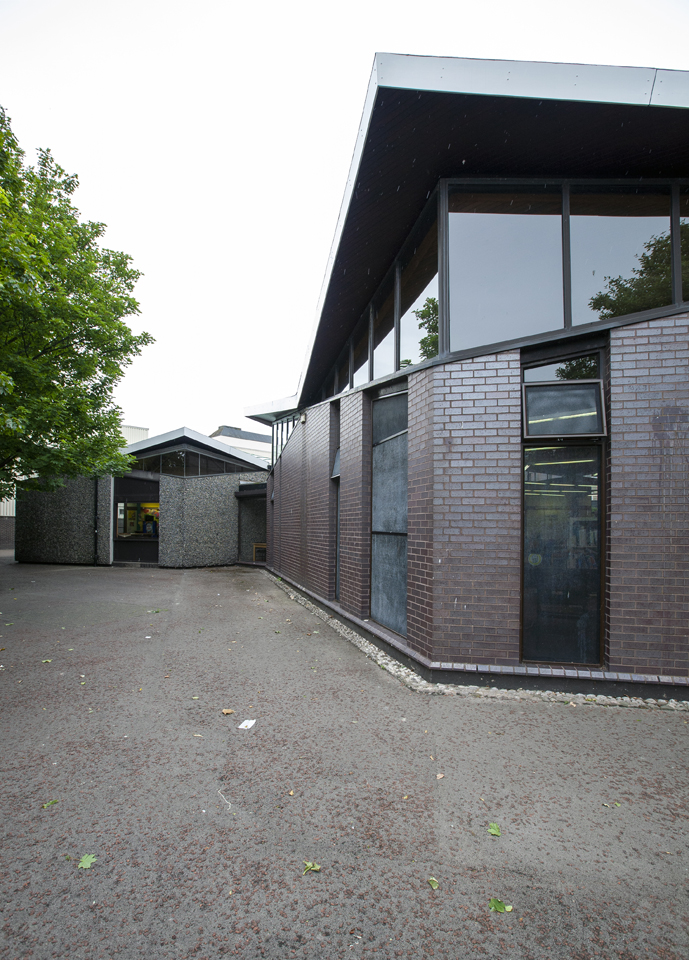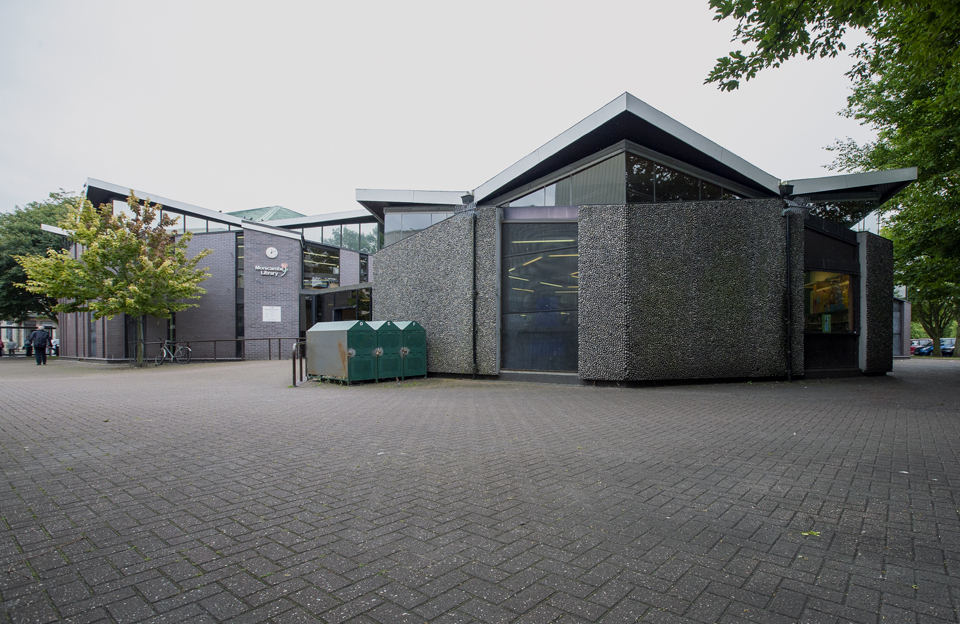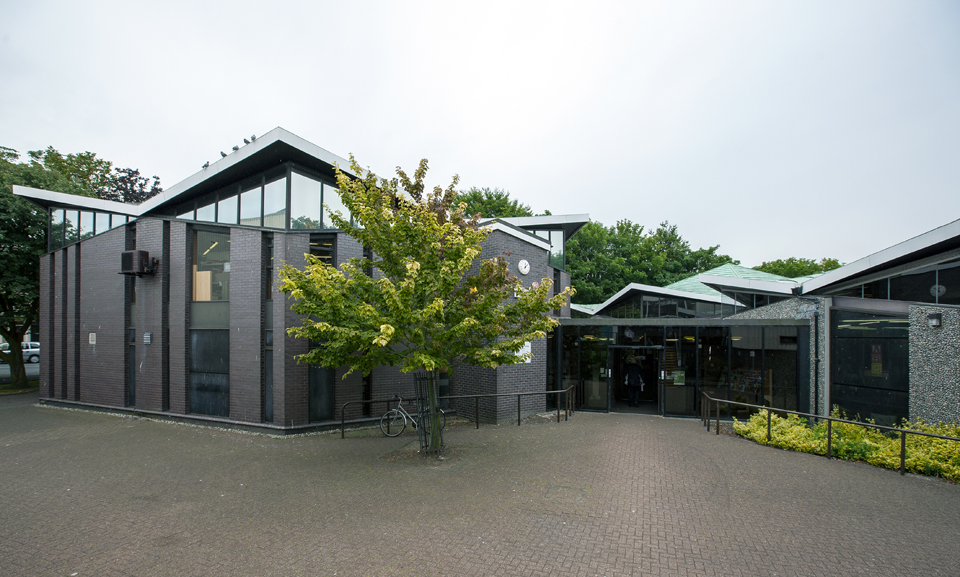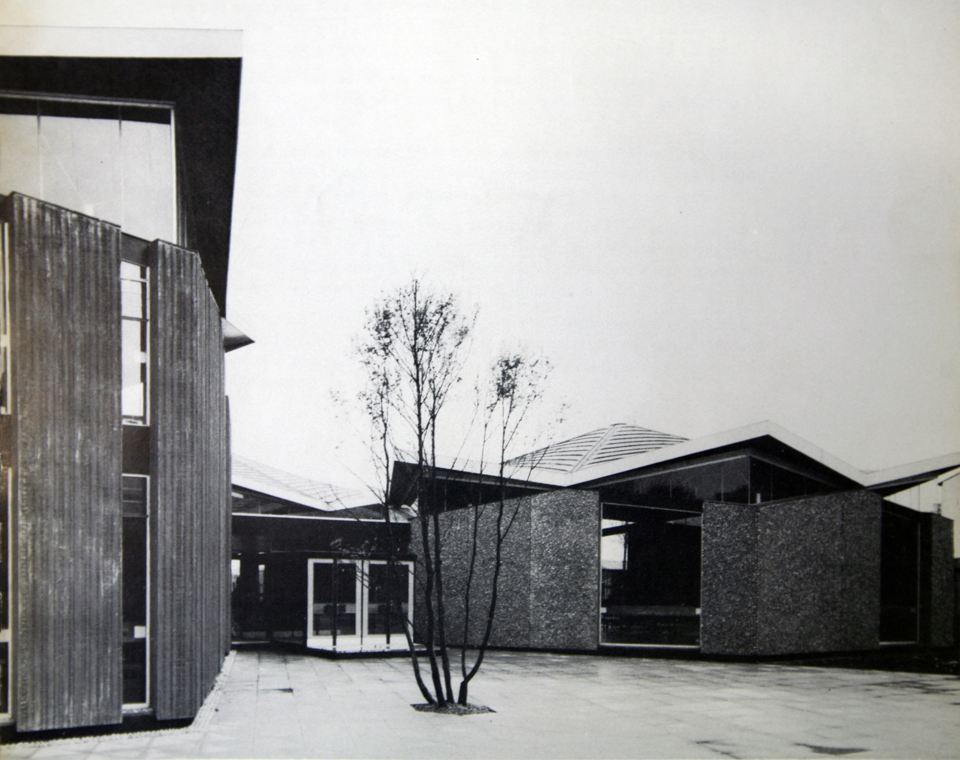Library
1967
Morecambe’s first county library was in adapted premises on Victoria Street that were deemed inadequate before the outbreak of war in 1939. After an extended search for a site, the former gasworks was proposed, but not considered ideal due to its situation. However, plans for a future shopping centre that would connect the site to the traditional town centre made it more favourable. After many years of difficult negotiations to establish a site for the library, there was a strong will to produce an exemplary project. Realised under Roger Booth’s tenure as County Architect, within a system of library buildings, Morecambe was an individual larger types and satisfied Booth’s civic minded approach. He stated, ‘of all the County Council buildings, the library is one of the few to which all members of the public have access and it, therefore, provides concrete evidence of one of the many facilities being provided by the County Council to so many Local Authorities throughout the County’ [1]. Booth favoured strong geometric forms as seen in many of his schemes across the county. On this project he was assisted by Gordon Ellit and A.R. Sharrock. The Fixed Price contract was tendered in February 1965 and construction commenced in May of the same year. The building was completed to a contract sum of £113,098 in May 1967. Its unusual hexagon plan form followed other earlier libraries that had also broken free of rectangular geometry, most notably Jesmond Library, Newcastle (Faulkner Brown, 1963). The three hexagons were variously interlocking and spaced apart to create a lobby, vivarium and an enclosed external courtyard. The hexagon was seen to provide ‘the maximum of free space and daylight’ and to offer ‘flexibility in interior re-arrangements’ [2]. A steel frame meant that the hyperbolic paraboloid roofs could be visually separated from the walls and appear to float. In the spaces between the roof and the head of the walls, triangular sections of clerestory glazing supplemented the daylight provided by the tall, narrow apertures in the walls. The concrete panels that originally clad most of the building (now replaced with a dark brick) were part of another construction under development by the R&D group in the period and were seemingly tested here to see how an array of alternative widths could be used in a bespoke setting. The system itself was deployed in earnest in later police stations and in Skelmersdale Library. Morecambe used the Scott-Smith library furniture designed by the Architect’s Department in house R&D group. Reviewed in the Library Association’s Library Buildings 1967-68, its urban-civic qualities were acknowledged as they wrote that ‘this one-off design recognizes the claim of local circumstances and demonstrates how the architect can meet both the demands of the librarian and the muted cry for re-birth in so many urban areas to-day’ [3]. Pevsner also praised the Library, writing that, ‘much of what was built and is being built is just gimmicky and will for later generations have only the value of curiosities of mood, but there are good buildings as well, and in North Lancashire one ought perhaps to single out the County Library at Morecambe by the County Architect Roger Booth, with its hexagonal spaces and its hyperbolic roof’ [4].
[1] Lancashire County Architect’s Report 1962-63
[2] Lancashire County Architect’s Report 1962-63
[3] Library Buildings 1967-68, The Library Association
[4] Pevsner, Nikolaus, (1969) North Lancashire (London: Penguin)
